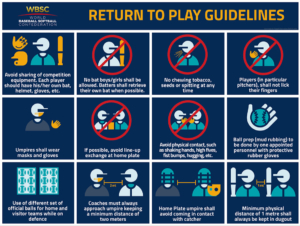Considerations for Youth Baseball During COVID-19
Youth baseball has commenced in many communities, even as the United States still wages a fierce battle with the COVID-19 pandemic, and the MLB plans to begin a shortened season later this month, too. While youth baseball league officials and coaches are instituting various safety protocols, more may be needed to effectively prevent the spread of the virus.
One youth baseball team in Newberg, Oregon recently had eight people linked to their team test positive for COVID-19 following its participation in a weekend tournament. The tournament was in another town where two youth players tested positive for the virus. Although no specific evidence exists that the people linked to the Newberg team contracted the virus from other players, this incident suggests that COVID-19 safety practices need to be refined if competition is to resume.
The MLB recently announced that it will begin a modified season beginning on July 23 and 24. Much of the protocol for the major leagues can be implemented at the youth level as well. The game of baseball keeps players relatively distanced, but one potential concern for virus transmission lies in the shared touching of the baseball itself. While the MLB has enough resources to replace any ball in play or touched by multiple players, the Little League Best Practices guide recommends simply rotating balls at least every two innings. Although it is inevitable that a single ball will be touched by more than one player during a game, this regular ball replacement could limit individual contact greatly. Similarly to other sports, both the MLB and Little League also recommend non-playing personnel wear face coverings. However, non-playing personnel protocol varies at these levels in that Little League recommends moving the location of the umpire from behind the catcher to six feet behind the pitcher to create more physical distance. Several other logical guidelines to further reduce transmission of potential virus particles are outlined in the visualization from the World Baseball Softball Confederation (WBSC) below:

A concern that is not touched on specifically in the visualization above is protocol regarding the dugout. The WBSC recommends one meter of space between all individuals in the dugout, while the Little League guide encourages at least six feet. Either way, sufficient physical distance must be kept in these dugouts, and it would be most effective to have an assigned spot in the dugout for everyone for the duration of the game. In the case that there are too many individuals to fulfill this requirement, players and other personnel should be assigned a spot elsewhere, such as to the side of the dugout or in the bleachers. It is also recommended by the Little League that players, managers, and coaches should wear cloth face coverings for further safety while inside the dugout.
Strong accountability for symptoms of the virus could play a crucial first step in reducing transmission. For youth, this responsibility falls largely on the shoulders of parents. One efficient solution to this has been created with a new app called “Clear2Play” that notifies parents to answer questions regarding their child’s temperature and other health symptoms prior to attending practices and on game days. The app documents and stores all information entered, which allows it to be of great assistance when contact tracing becomes necessary. With the hope that parents would be honest about their childrens’ health and vigilant about reporting it, this could be a very efficient way to pre-screen kids and help ensure that no one who is symptomatic enters the ballpark. Of course, this doesn’t solve the problem of asymptomatic carriers of the virus, but it’s an important idea to consider.
Unfortunately, the transmission of COVID-19 has not been prevented entirely in the return of youth baseball thus far. However, the combination of these protocols, if followed correctly, could allow the over 15 million kids who normally participate in youth baseball – and who enjoy and benefit from participation in America’s pastime – to rejoin their teammates and get back on the field in a safe way.
Margaret Smith is a Roger Perry Research Intern at the Pioneer Institute. She is currently a student at Bates College studying economics.



